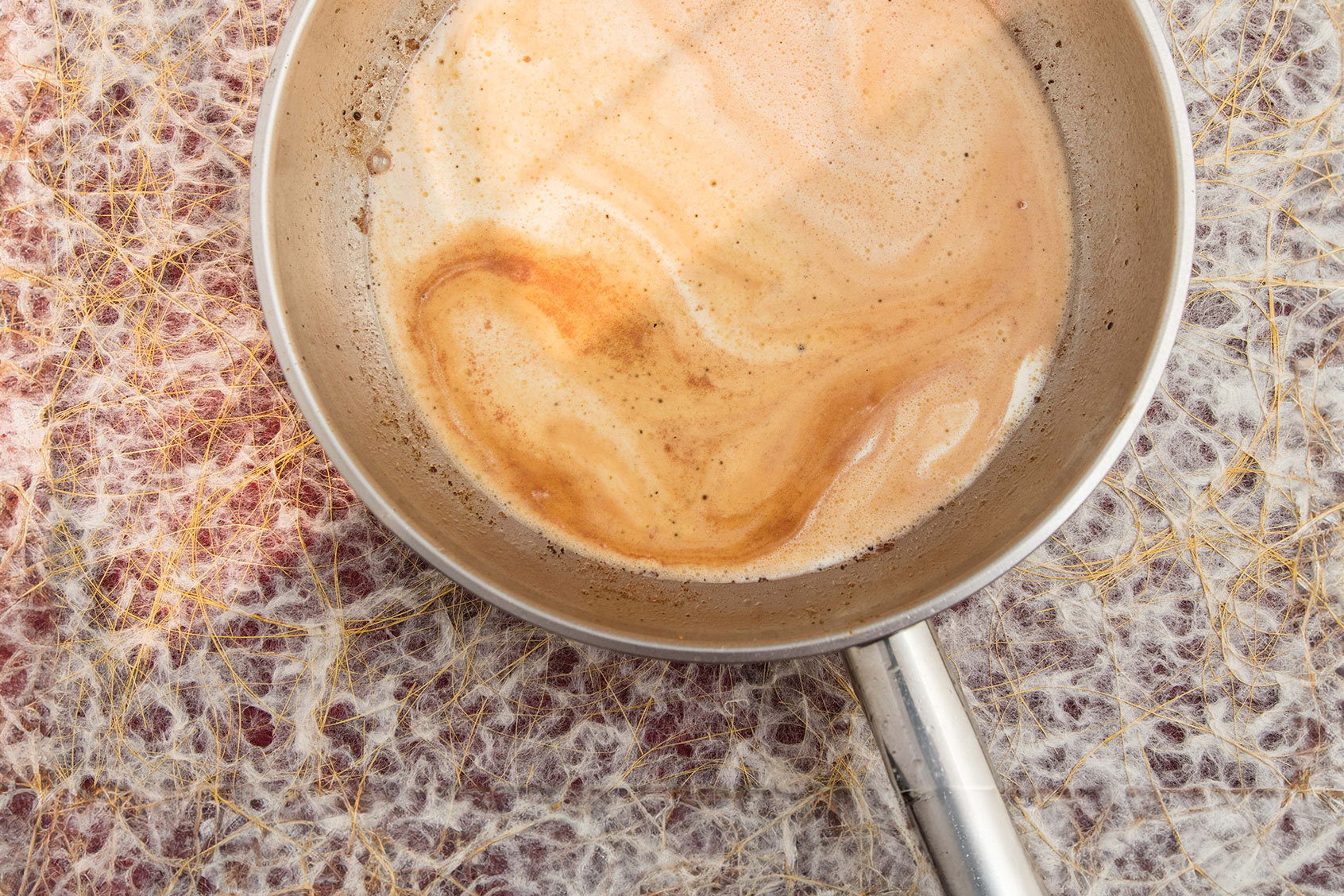We all need food. We all love food. The bulk of us love cooking. What we don’t all love, though — and the task that is rarely if ever mentioned in aspirational food media — is washing dishes. Underlying every recipe is a silent elephant in the room: No matter how delicious the end result might be, you will be spending some time washing dishes (or outsourcing that responsibility to a designated dish washer).
There is one go-to culinary technique, though, that kills two birds with one stone (or, if you prefer, "feeds two birds with one scone"): deglazing. While there are variations on how and when to employ this technique based on the type of pan you use or the dish you're making, the robust result will save you both frustration and elbow grease. It scores the same marks on functionality and convenience as it does on flavor. It doesn’t get much better than that.
I've been cooking tons of chicken and caramelized onions lately. In literally every instance, I've deglazed. In 99% of my cookery, I'm deglazing (that sounds like a song lyric to me).
I recall first learning about deglazing from Rachael Ray back in the early 2000s when I would come home from school and immediately turn on the Food Network — just like every other 12-year-old-boy would often do. Ray's go-to for deglazing was always chicken stock or wine, but I've found that water does the trick as well. If you're not looking to cook with wine or don't have stock on hand, don't shy away from using it instead.
Technique-wise, deglazing is essentially using that technique to release fond from the bottom of a pan. "Fond" is the crisped, browned bits lightly stuck to the bottom of a pan after cooking something, whether that be a chicken breast, a steak or some frizzled leeks.
The liquid helps to "un-stick" the crisped bits and, depending on how high the heat is, that same liquid — now permeated with the flavors from the bottom of the pan — begins to reduce, concentrating those flavors all the more. That liquid will continue to reduce, eventually turning into a pan sauce or gravy of sorts, which can then be amplified even further through additions of cream, butter, seasonings, fresh herbs and the like.
We need your help to stay independent
The built-in positive of this approach? That pan is now practically totally clean once you pour out the sauce or gravy.
Honestly, I’ve deglazed even when I’m not looking to make a sauce or gravy by adding some water to a pan with some burnt-on bits, letting it “cook” for a bit over medium-low heat, then pouring the mixture out into the sink and cleaning the pan like normal. I can’t recommend this enough, especially in any cases in which you may have really done a number on your pots and pans. Also, this shouldn’t be saved only for the stove: If you have a sheet tray with some especially stuck-on bits, put it over your burners, add some water, and see if this method can help out in this case, too (I bet it will).
If, let’s say, you instead throw a pan with a bunch of caked-on crud into the sink and walk away, that pan will cool and the crud will adhere even further, making the dishwashing a few hours later even more challenging. But if you tackle it right away, while it’s still hot, and use some water to deglaze, I promise that you’ll be thanking yourself later.
Want more great food writing and recipes? Subscribe to Salon Food's newsletter, The Bite.
I'm not alone. Katie Holdefehr writes for Real Simple that "the trick to cleaning a burnt stainless steel pan without much scrubbing is to deglaze the pan while it's still hot." In the Los Angeles Times, Amanda Natividad concurs, echoing the point (and stipulating that doing this process with water is more of a cleaning technique, while using wine is what makes it actual "deglazing.") Faith Durand's excellent title for her cleaning technique article in The Kitchn sums it up in saying, “Why You Shouldn't Take a Pan off the Stove Until it’s Clean.”
Ellen Brown's 1989 Washington Post article on deglazing is called "It's Delightful, It's De Lovely, It's Deglazing" and I couldn't agree with her more. Your pots and pans will thank you, too — as will your dish soap, sink basin and elbows, too.

